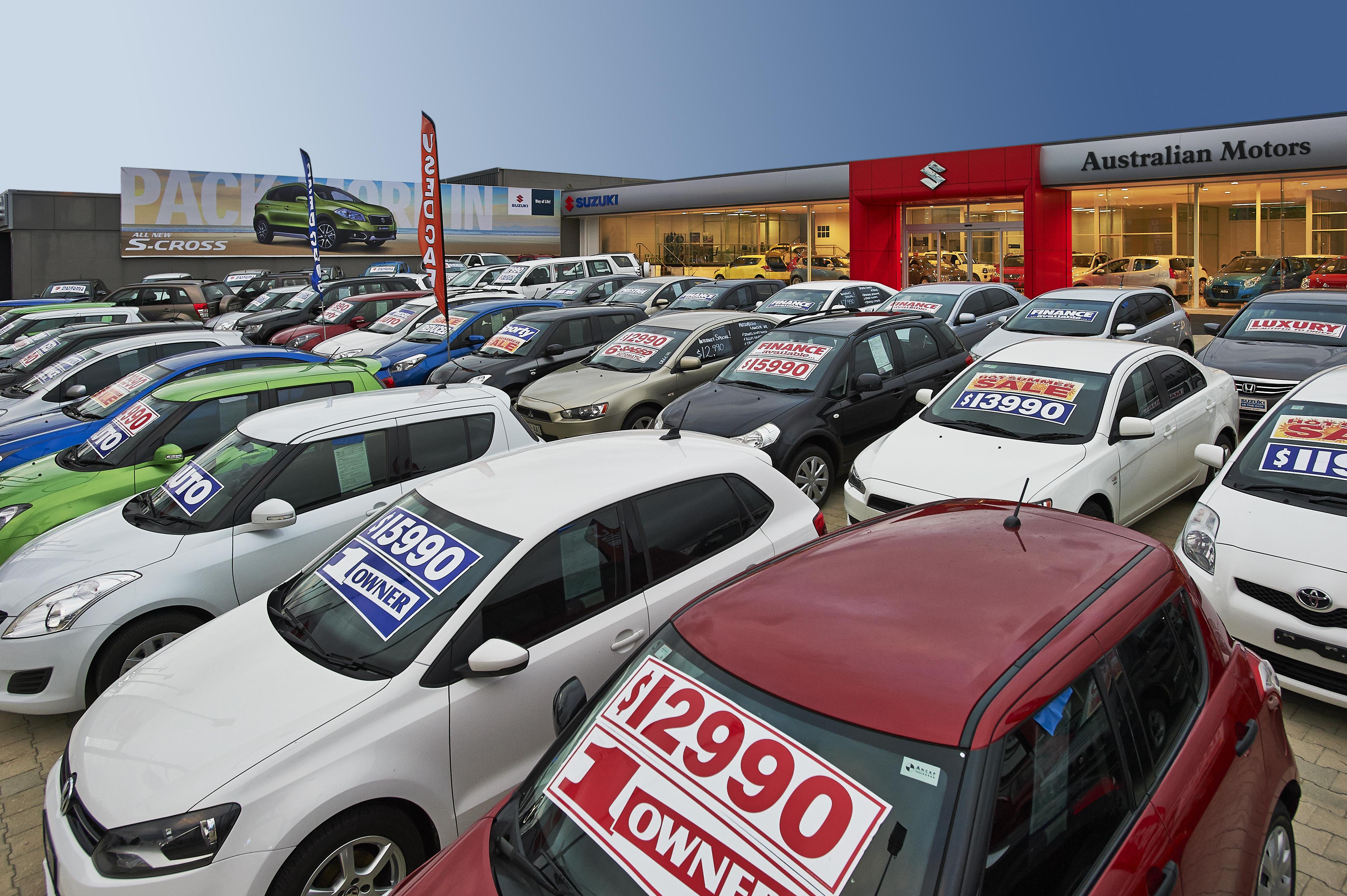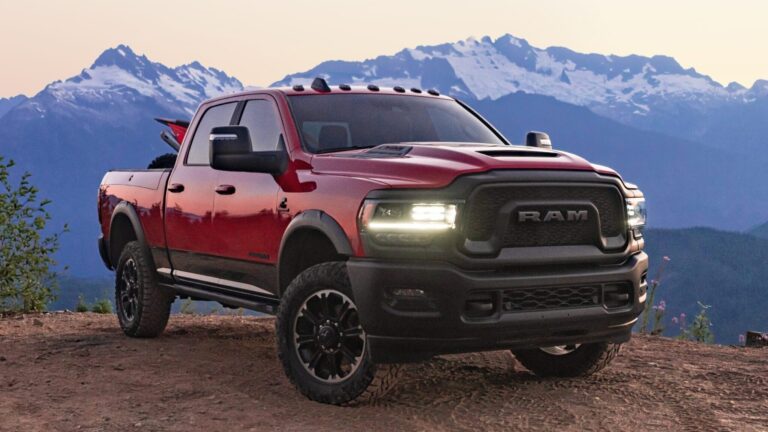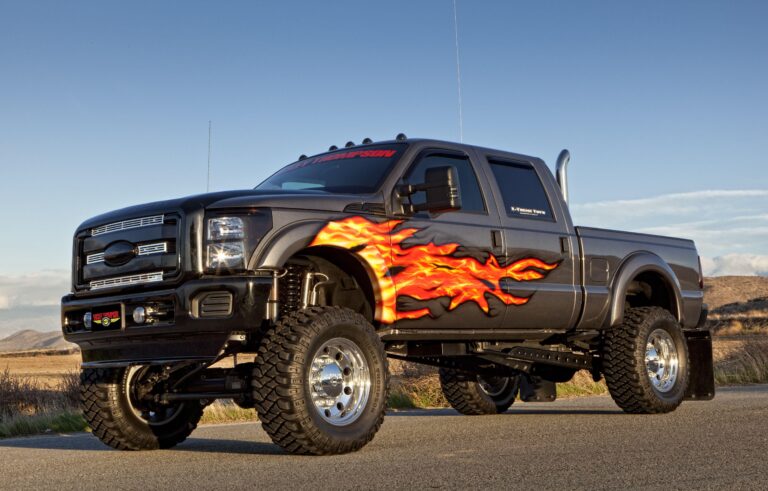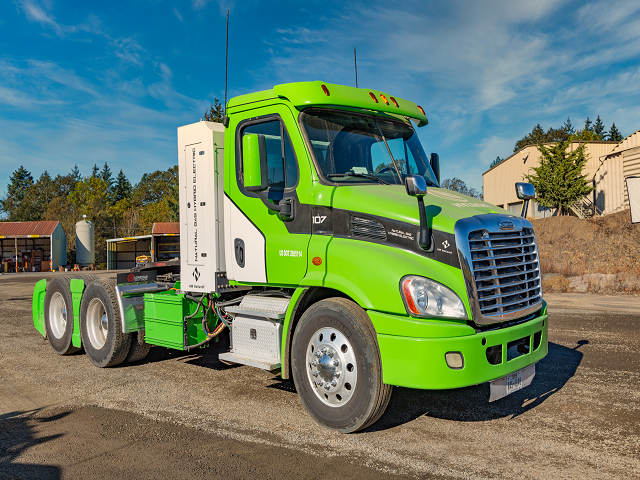Used 1990s Ford Trucks For Sale: A Comprehensive Buyer’s Guide
Used 1990s Ford Trucks For Sale: A Comprehensive Buyer’s Guide cars.truckstrend.com
In an era dominated by complex electronics and increasingly rounded designs, the rugged simplicity and timeless appeal of 1990s Ford trucks hold a special place in the hearts of many enthusiasts and practical buyers alike. Whether you’re seeking a dependable workhorse, a nostalgic weekend cruiser, or a solid foundation for a custom build, the F-Series and Ranger models from the ’90s offer a compelling blend of durability, affordability, and classic American styling. This comprehensive guide will navigate you through everything you need to know about buying a used 1990s Ford truck, from identifying the right model to crucial inspection points and what to expect post-purchase.
Why Choose a 1990s Ford Truck? The Enduring Appeal
Used 1990s Ford Trucks For Sale: A Comprehensive Buyer’s Guide
The allure of 1990s Ford trucks isn’t just about nostalgia; it’s rooted in their inherent qualities that make them remarkably practical choices even today.
- Built to Last (The "OBS" Era): The F-Series trucks from 1992-1997 (often referred to as "OBS" or Old Body Style) are legendary for their robust construction. These vehicles were designed before extensive cost-cutting measures took hold, resulting in thicker steel, simpler mechanical systems, and a reputation for enduring hundreds of thousands of miles with proper care.
- Simplicity and Maintainability: Unlike modern trucks laden with intricate computer systems, ’90s Fords boast straightforward mechanics. This translates to easier, often DIY-friendly maintenance and repair, reducing labor costs and making them ideal for those who prefer to wrench on their own vehicles.
- Affordability: While prices for well-preserved examples are steadily rising, ’90s Ford trucks generally remain far more affordable than their newer counterparts, offering significant utility and character for a fraction of the cost.
- Timeless Design: The square-body aesthetic of the OBS F-Series, with its clean lines and no-nonsense presence, has aged gracefully and is experiencing a resurgence in popularity among collectors and customizers.
- Versatility and Utility: From the compact Ranger to the heavy-duty F-350, these trucks were built to work. They still offer impressive towing and hauling capabilities, making them viable options for everything from daily commuting to serious ranch work.

Navigating the Models: Iconic 1990s Ford Trucks
The 1990s saw a significant evolution in Ford’s truck lineup, offering a variety of sizes and capabilities.
The F-Series: Full-Size Workhorses
1. Ninth Generation (1992-1996/1997 F-250/350) – The "OBS" Icon:
This is arguably the most sought-after generation for its classic looks and rugged build.

- Models: F-150 (light-duty), F-250 (heavy-duty), F-350 (one-ton).
- Cab Styles: Regular Cab, SuperCab (extended cab). Crew Cab was available on F-250/350.
- Engine Options:
- Gasoline:
- 4.9L (300 cu in) I6: Legendary for its bulletproof reliability, low-end torque, and ease of maintenance. A great choice for a daily driver or light work.
- 5.0L (302 cu in) V8: Good all-around performer, common in F-150s.
- 5.8L (351 cu in) V8: Stronger than the 5.0L, offering more power for heavier loads.
- Diesel:
- 7.3L IDI Diesel (1992-1994.5): Indirect injection diesel, known for its longevity, but less powerful and efficient than its successor.
- 7.3L Power Stroke Turbo Diesel (1994.5-1997): The holy grail for many. This direct-injection, turbocharged diesel is renowned for its incredible durability, power, and surprising fuel economy for its size. It’s highly sought after for heavy towing and as a long-lasting engine.

- Gasoline:
- Transmissions: Manual (Mazda M5OD, ZF5) and Automatic (E4OD, C6). The E4OD automatic, when well-maintained, can be robust, but earlier versions had some issues.
2. Tenth Generation (1997-1999 F-150 / 1999 F-250 Light Duty):
Ford redesigned the F-150 in 1997 with a more aerodynamic, rounded body style and a completely new interior. The F-250 (light duty) also adopted this new platform. The heavy-duty F-250 and F-350 continued with the OBS body style until 1999 when the Super Duty line was introduced.
- Engine Options: 4.2L V6, 4.6L V8, 5.4L V8 (Triton series). These engines offered improved refinement and power over the outgoing models but require different maintenance considerations.
The Ranger: Compact and Capable
Throughout the 1990s, the Ford Ranger remained a popular choice for those needing a smaller, more fuel-efficient truck for lighter duties.
- Models: Ranger
- Cab Styles: Regular Cab, SuperCab (extended cab).
- Engine Options: 2.3L 4-cylinder, 3.0L V6, 4.0L V6. The 4.0L V6 offers the best power for the Ranger, suitable for light towing.
- Key Features: Known for their nimble handling, ease of parking, and respectable fuel economy.
The Bronco: The Full-Size SUV Icon (1992-1996)
While technically an SUV, the full-size Ford Bronco shared its platform, engines (5.0L V8, 5.8L V8), and many components with the F-150 of the same era. Its removable hardtop and rugged off-road capability make it a highly desirable classic.
Key Considerations When Buying: Your Pre-Purchase Checklist
Buying a used 1990s Ford truck requires a thorough inspection. These vehicles are decades old, and while durable, they are not immune to wear and tear.
- Rust: This is often the biggest enemy.
- Frame: Check the entire frame, especially around suspension mounting points, spring perches, and where body mounts connect. Look for flaking, holes, or significant pitting.
- Body Panels: Inspect rocker panels, cab corners, wheel wells, bed supports, and under the doors. Rust in these areas can be extensive and costly to repair.
- Brake Lines/Fuel Lines: Check for corrosion on these critical components.
- Engine Condition:
- Start-Up: Listen for any unusual noises (knocks, ticking, squeals). Blue smoke (burning oil), white smoke (coolant), or black smoke (rich fuel/diesel issue) are red flags.
- Fluid Leaks: Check under the truck and around the engine for oil, coolant, or transmission fluid leaks.
- 7.3L Power Stroke Specifics: Check for oil leaks from the valley (common injector O-rings), listen for a smooth idle (no "lope"), and ensure it starts relatively easily (though glow plugs can be an issue). Ensure the turbo spools up correctly.
- Gas Engines: Check for signs of head gasket issues (milky oil, coolant loss, overheating).
- Transmission:
- Test Drive: Ensure shifts are smooth, without harsh jerks or slipping. Test all gears, including reverse.
- Fluid: Check the transmission fluid level and color. Burnt smell or dark color indicates issues.
- Suspension and Steering:
- Test Drive: Listen for clunks or squeaks over bumps. Feel for excessive play in the steering wheel or wandering on the road.
- Inspection: Look for worn ball joints, tie rods, control arm bushings, and shock absorbers.
- Brakes:
- Test Drive: Ensure the truck stops straight and without excessive pedal travel. Listen for grinding or squealing.
- Inspection: Check brake pads/shoes, rotors/drums, and brake lines for corrosion.
- Electrical System: Test all lights, wipers, power windows, locks, radio, and gauges. Ensure the HVAC system works correctly.
- Interior: Check for excessive wear on seats, dash cracks, and functionality of all switches and controls.
- Tires: Check tread depth and ensure even wear. Mismatched or severely worn tires indicate a lack of maintenance or alignment issues.
- Maintenance Records: Ask for any service history. This provides invaluable insight into how well the truck has been cared for.
- Pre-Purchase Inspection (PPI): If you’re serious about a truck, invest in a PPI by a trusted mechanic, especially one familiar with older Ford trucks. They can identify issues you might miss.
Where to Find Your Next 90s Ford Truck
- Online Marketplaces: Facebook Marketplace, Craigslist, AutoTrader, eBay Motors are excellent resources. Use specific search terms like "OBS Ford," "7.3 Power Stroke," "Ford F150 1996," etc.
- Local Dealerships: Less common for older models, but some used car dealerships might have them.
- Classic Car Auctions: For higher-end, well-preserved, or restored examples.
- Word-of-Mouth: Let friends and family know you’re looking; sometimes the best deals are found through personal connections.
What to Expect Post-Purchase: Common Issues & Maintenance Tips
Even a well-maintained 90s Ford truck will require ongoing care. Here are common areas to anticipate:
- Rust Mitigation: If you live in a rust-prone area, consider undercoating or rust-proofing to prevent further deterioration. Address any existing surface rust promptly.
- Fluid Changes: Regular oil changes are crucial. Also, consider flushing and replacing transmission fluid, differential fluid, and coolant if the history is unknown.
- Rubber Components: Hoses, belts, and bushings will age and crack. Plan to replace these as needed.
- Electrical Gremlins: Minor electrical issues (flickering lights, non-working accessories) can pop up. Often, these are simple fixes like corroded grounds or worn switches.
- Fuel System: Older fuel lines, pumps, and filters can eventually fail.
- 7.3L Power Stroke Specifics: Plan for eventual glow plug replacement (especially in colder climates), valve cover gasket leaks, and possibly injector O-ring replacement if experiencing hard starts or rough idle.
Valuation and Pricing Guide
The price of a used 1990s Ford truck varies wildly based on several factors:
- Model and Engine: 7.3L Power Stroke F-Series trucks, especially Crew Cabs and 4x4s, command the highest prices. Broncos are also highly valued.
- Condition: Excellent, rust-free, low-mileage examples fetch premium prices. Trucks needing significant work will be considerably cheaper.
- Mileage: Lower mileage generally means higher prices, though high-mileage 7.3L diesels with good maintenance can still be valuable.
- Trim Level: XLT, Lariat, and Eddie Bauer trims (for Bronco) often have more features and command higher prices than base models.
- Location: Prices can vary regionally, with rust-free Southern and Western trucks often being more expensive.
- 2WD vs. 4WD: 4×4 models are typically more desirable and pricier.
Estimated Price Range for Used 1990s Ford Trucks (Approximate)
| Model & Key Feature | Fair Condition (Needs Work) | Good Condition (Driver) | Excellent Condition (Collector) |
|---|---|---|---|
| Ford F-150 (Gas) | $2,000 – $5,000 | $5,000 – $10,000 | $10,000 – $25,000+ |
| Ford F-250/F-350 (Gas) | $2,500 – $6,000 | $6,000 – $12,000 | $12,000 – $30,000+ |
| Ford F-250/F-350 (7.3L Diesel) | $4,000 – $8,000 | $8,000 – $18,000 | $18,000 – $45,000+ |
| Ford Ranger (Gas) | $1,500 – $4,000 | $4,000 – $8,000 | $8,000 – $15,000+ |
| Ford Bronco (Gas) | $5,000 – $15,000 | $15,000 – $30,000 | $30,000 – $70,000+ |
Note: These are general estimates and can fluctuate significantly based on specific year, mileage, features, modifications, and market demand.
Frequently Asked Questions (FAQ)
Q: Are 1990s Ford trucks reliable?
A: Yes, generally very reliable, especially the OBS F-Series and the 4.9L I6 and 7.3L Power Stroke engines. Their simplicity means fewer complex systems to fail, and parts are readily available.
Q: Which 1990s Ford truck engine is best?
A: For heavy towing and longevity, the 7.3L Power Stroke diesel is widely considered the best. For gas engines, the 4.9L I6 is incredibly durable and economical, while the 5.8L V8 offers a good balance of power and reliability.
Q: Are parts still available for 1990s Ford trucks?
A: Absolutely! Due to their popularity and the sheer number produced, parts are widely available from aftermarket suppliers, online retailers, and even Ford dealerships for many components. Salvage yards are also a good resource for used parts.
Q: Can a 1990s Ford truck be a daily driver?
A: Many people use them as daily drivers. They are comfortable enough for regular use, though they lack the modern amenities and fuel efficiency of newer vehicles. Proper maintenance is key to their reliability as daily drivers.
Q: What’s the main difference between the OBS F-150 and the 1997-1999 F-150?
A: The OBS (Old Body Style, up to 1996 for F-150) has a more traditional, boxier design and simpler mechanicals. The 1997-1999 F-150 (Tenth Generation) features a more aerodynamic, rounded body, a new interior, and the Triton series V6/V8 engines. The OBS is often favored for its ruggedness and ease of repair, while the newer generation offered improved ride comfort and refinement.
Q: How much should I budget for repairs after buying an older truck?
A: It’s always wise to budget at least 10-20% of the purchase price for immediate maintenance and unforeseen repairs in the first year. Even a seemingly "good" truck will likely need new fluids, filters, and possibly some wear-and-tear items like tires, brakes, or suspension components.
Conclusion
The appeal of used 1990s Ford trucks for sale is undeniable. They represent an era of robust, no-nonsense vehicle manufacturing, offering a potent blend of utility, classic aesthetics, and mechanical simplicity. By understanding the different models, knowing what to look for during an inspection, and budgeting for ongoing maintenance, you can confidently find a durable and rewarding truck that serves your needs for years to come. Whether for work, play, or simply the joy of owning a piece of American automotive history, a 90s Ford truck can be an excellent investment that continues to deliver value long after the initial purchase.





